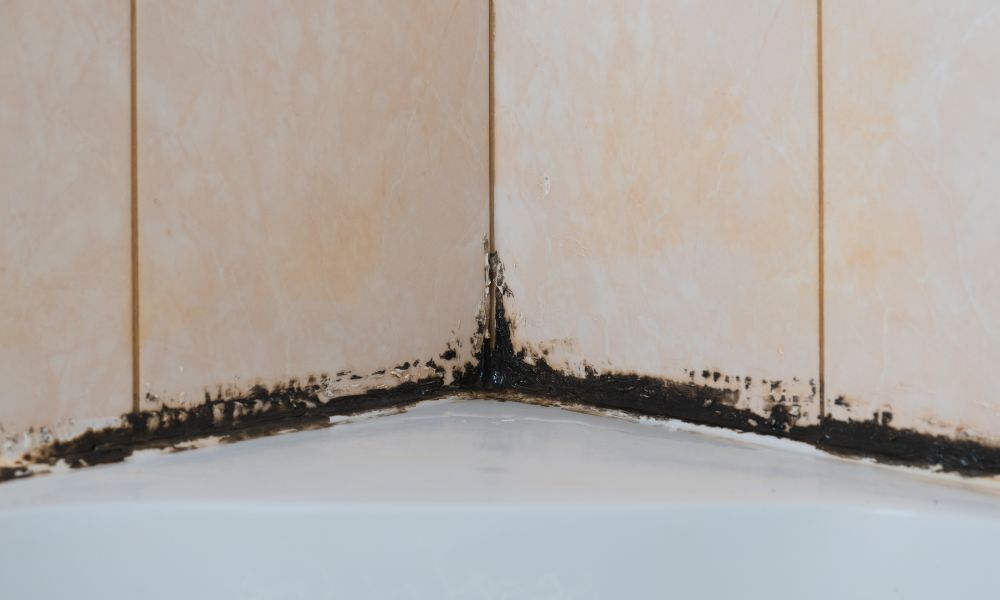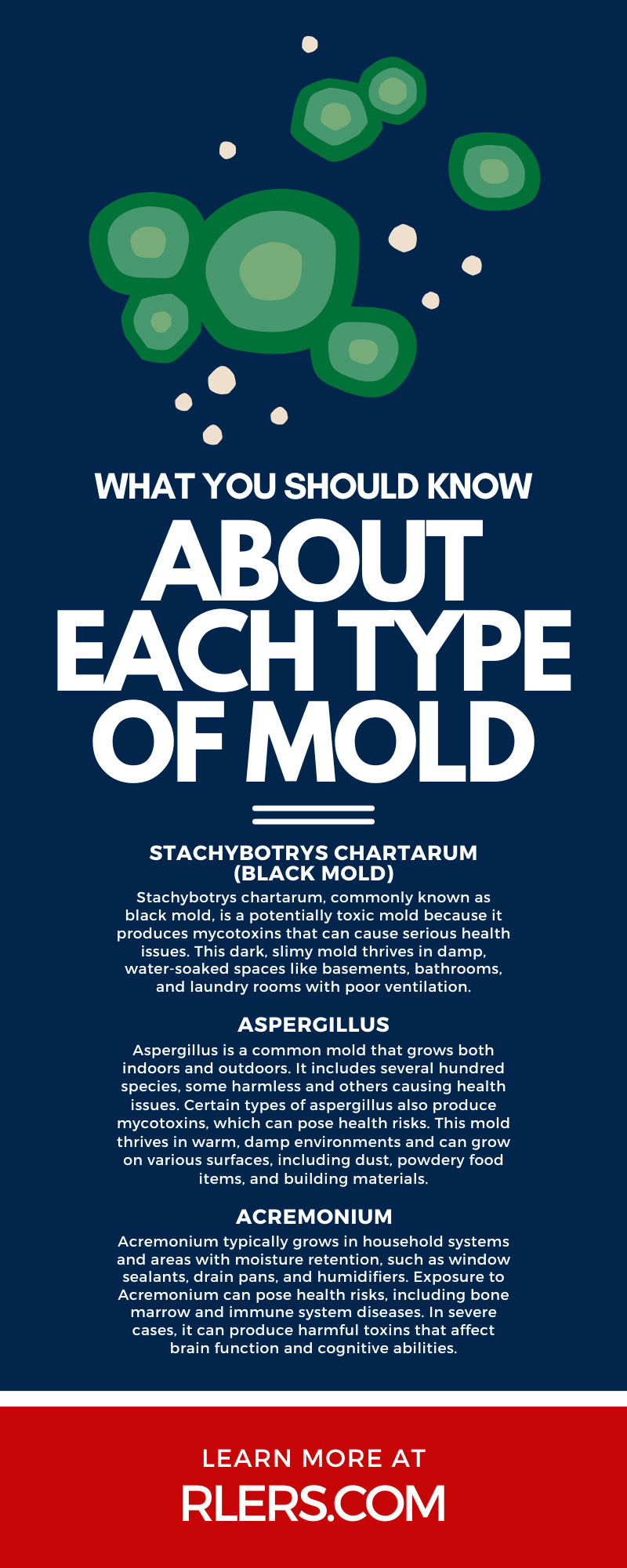
Mold, a silent invader, can quietly creep into our homes and wreak havoc on both the structure of the building and the health of those who reside within. The issue of mold is not just about unsightly patches on your walls or a musty smell; it is more complex and potentially dangerous than most people realize.
This is why every homeowner should know about each type of mold. At Redline Emergency Solutions, we hope to shed light on the different types of mold, their impact, prevention strategies, and effective cleaning strategies. By gaining this knowledge, you can protect your home and health from the detrimental effects of these uninvited guests.
Categories of Mold
Homeowners should be aware of three primary categories of mold: allergenic, pathogenic, and toxigenic.
Allergenic molds are particularly troublesome for individuals with allergies or asthma. While they are typically not life-threatening, exposure to these molds can trigger allergic reactions or asthma attacks.
Pathogenic molds can cause infections, especially in individuals with compromised immune systems. An example of pathogenic mold is Aspergillus fumigatus, which can lead to a lung infection if inhaled.
Toxigenic molds are the most dangerous. They produce toxins that can lead to serious health problems, such as neurological disorders and, in extreme cases, death.
Not all molds fall neatly into these categories, and some can have characteristics of more than one type. Regardless of the category, any mold growth in your home is something to take seriously.
Stachybotrys Chartarum (Black Mold)
Stachybotrys chartarum, commonly known as black mold, is a potentially toxic mold because it produces mycotoxins that can cause serious health issues. This dark, slimy mold thrives in damp, water-soaked spaces like basements, bathrooms, and laundry rooms with poor ventilation.
Exposure to Stachybotrys chartarum can lead to symptoms such as persistent coughing, eye, nose, and throat irritation, fatigue, and headaches. In severe cases, it can cause neurological problems and lung damage. It is considered one of the most dangerous molds, posing a serious concern if you find it in your home.
Aspergillus
Aspergillus is a common mold that grows both indoors and outdoors. It includes several hundred species, some harmless and others causing health issues. Certain types of aspergillus also produce mycotoxins, which can pose health risks. This mold thrives in warm, damp environments and can grow on various surfaces, including dust, powdery food items, and building materials.
Exposure to aspergillus is generally not harmful for people with healthy immune systems. However, individuals with weakened immune systems or lung diseases may develop aspergillosis, a range of diseases from mild allergies to severe lung infections.
Acremonium
Acremonium is a group of slow-growing molds that can change in appearance over time. Initially, it may appear small and moist, with pink, gray, or orange coloration. As it matures, it dries out and becomes powdery and typically white or grayish in color.
Acremonium typically grows in household systems and areas with moisture retention, such as window sealants, drain pans, and humidifiers. Exposure to Acremonium can pose health risks, including bone marrow and immune system diseases. In severe cases, it can produce harmful toxins that affect brain function and cognitive abilities.
Alternaria
Alternaria is a common allergenic mold that grows indoors and outdoors. It spreads quickly and has a velvety texture with dark green or brown hairs. It’s linked to asthma and can cause allergies like a runny nose, itchy eyes, and skin irritations. While less risky than toxigenic molds, prolonged or high-concentration exposure can have serious health effects.
Cladosporium
Cladosporium has a distinctive black or olive-green color and grows on textiles, wood, and porous materials. Unlike other molds, Cladosporium thrives in cooler climates. This mold affects people through airborne spores, which can cause allergic reactions.
Symptoms may include skin rash, sinusitis, lung infections, and asthma. Although less toxic than molds like Stachybotrys chartarum, its high spore count can worsen respiratory problems, especially in those with pre-existing conditions or weakened immune systems.
How To Prevent Mold Growth
Preventing mold growth is paramount to maintaining a healthy and safe living environment. Here are some practical steps you can take to keep your home mold-free:
Control Humidity Levels
High humidity creates an ideal breeding ground for mold. Aim to keep your home’s humidity below 50 percent using dehumidifiers or air conditioners.
Improve Ventilation
Proper ventilation helps reduce moisture and prevent mold buildup. Ensure ventilation in areas prone to dampness, like bathrooms, kitchens, and laundry rooms.
Clean Regularly
Regular cleaning, especially in areas prone to mold, can help to prevent its growth. Pay special attention to bathrooms, kitchens, and basements.
Promptly Address Leaks
Leaks from pipes or roofs provide the moisture that mold needs to grow. Fix any leaks as soon as possible to prevent water accumulation.
Keep Materials Dry
Avoid leaving wet clothes or towels lying around. Dry any damp items and wet surfaces as soon as possible.
Use Mold-Resistant Products
If you’re building or renovating your home, consider using mold-resistant products like mold-resistant drywall or mold-resistant paint, especially in rooms that are likely to be damp.
How To Clean Mold
The mold cleanup process depends largely on the type of mold and its location in your home. Simple DIY cleanup processes can be effective for minor mold issues, like Alternaria or Cladosporium growth. Here are some steps you can follow:
- Wear protective gear: Before you begin, wear protective gear, including rubber gloves, eye protection, and a mask, to protect yourself from mold spores.
- Gather cleaning solutions: Use a mild detergent, white vinegar, or baking soda dissolved in water to clean the mold. Apply the cleaning solution with a scrubbing brush, cloth, or sponge.
- Dry: After cleaning, thoroughly dry the cleaned area to prevent the regrowth of mold. Use fans or dehumidifiers to speed up the drying process.
- Dispose of cleaning materials: After cleaning mold, immediately dispose of any absorbent cleaning materials you used, such as cloths and sponges. This helps prevent the spread of mold spores from the cleanup site to other locations in your home.
Though you can follow these steps for mild mold cleanups, professionals should handle molds like black mold, Acremonium, aspergillus, and other toxic molds.
Professional mold remediation services, like those from Redline Emergency Solutions, have the necessary equipment and skills to handle these molds safely and effectively. Opting for professional mold cleanup in Dallas is a prudent choice when dealing with toxic molds to ensure the thorough removal of mold and prevent future growth.
Remember what you should know about each type of mold. However, if you’re ever unsure about the type of mold or the extent of its spread, consult a professional. They can conduct a thorough inspection, identify the mold, and recommend the best course of action.


